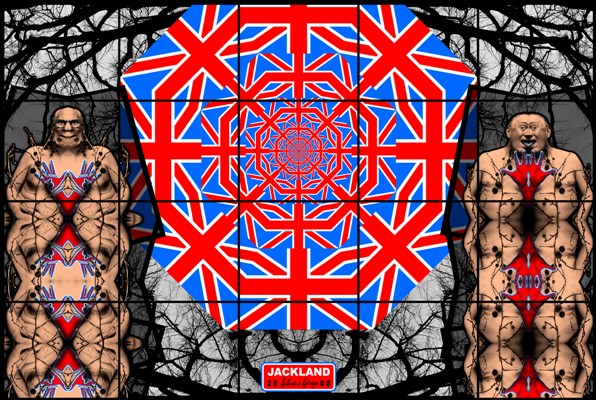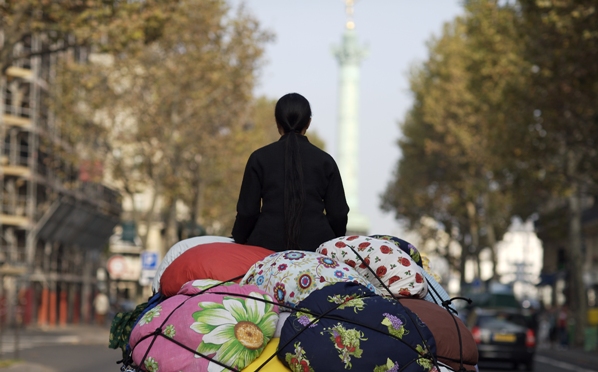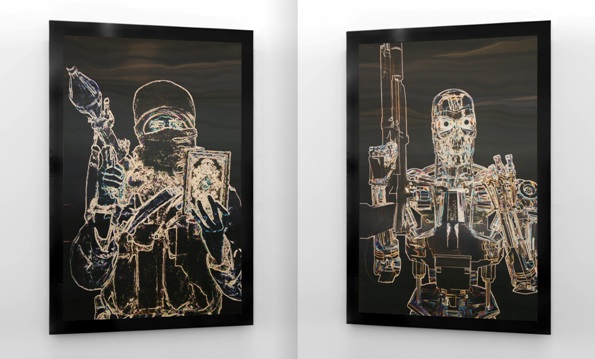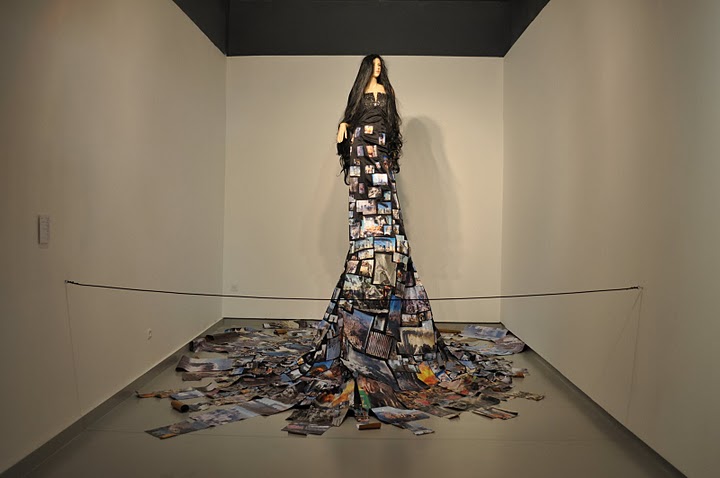The Museum on the Seam might have the best name for an art museum in the Middle-East. Situated on the “seam” of East and West Jerusalem, between the Jewish neighbourhood of Musrara and the Arabic hub that is Damascus Gate, it is a museum committed to showing contemporary art reflecting social and political themes.
The latest exhibition, titled WESTEND, is a group of works assembled with the aim of reflecting a new Middle-Eastern reality, one that bears witness to such recent events as the “Arab spring” and that considers Samuel Huntington’s thesis regarding the “clash of civilizations”. While not fully realizing this aim, the curator Raphie Etgar, has nevertheless selected a good cross-section of contemporary Middle-Eastern and Western art.
Entering WESTEND is an audio as well as visual experience, the ground floor is haunted by Arabic sound-chants emitting from an as yet unrevealed source, the chants feed into our viewing of the coming works. First up are Miki Kratsman’s black and white photographic prints of ‘holy warriors’, followed by the work of British artists Gilbert and George. Their work Jackland provides a freakishly colourful contrast to the stark pieces of Kratsman and Robert Kunec. Positioned opposite Gilbert and George, Kunec’s Suicide Bomber, de-constructs a bomber’s body parts to resemble a plastic toy-kit model. Observing the piece it is hard to register any shock, there is no representation of blood, bone or sinew. Painted in a dull grey, the artist de-humanizes the subject, giving it the appearance of an everyday thing that we might see on a supermarket shelf.

The Arabic sound-chants haunting the ground floor turn out to be from Joshua Neustein’s installation Incense. Romantic in theme, the work contrasts a beautiful crystal chandelier, reminiscent of old European grandeur, with a traditional Arabic bronze coffee pot. Both pieces have their own beauty – the chandelier grandiose, the coffee pot simple, but ornate. The obvious symbolism suggests the dominance of Western culture over Eastern, but the light alternately grows and dims on both, suggesting regret for the faded splendor and decline in tradition in both cultures.

Moving to the lower floor and a visually stimulating work by the Moroccan artist Mournir Fatmi. Fatmi creates installations influenced by a Modernist aesthetic and architectural designs. Modern Times: a History of the Machine, a fifteen minute video, shows etched drawings of the constant interplay between grids, wheels and machines. A virtual myriad of movement, the wheels are embellished with arabesques and Arabic letters, creating a sort of Modernist mosaic. Despite the visual beauty of the work, the artist has created a tension by the recurring sound of machinery jarring on our senses, preventing us from becoming that bit too comfortable.

Contributing a different and more meditative type of movement is KimsooJa’s video work Bottari Trucks-Migrateur. The piece features the artist assuming the role of a migrant, seated on a vehicle making its way through the streets of Paris. At no point do we see the traveller’s face, she remains anonymous. The camera is at all times positioned behind the seated figure, allowing us simultaneously to experience her journey and to imagine the journey through our own eyes. We register the stares of the people in the streets, their surprise at encountering a person so removed from everyday Parisian life. The still figure, the wrapped quilted bundles, all contribute to a framed composition of the image of a wanderer, a romantic nomad, slowly moving from city to city.

Some of the works chosen for the exhibition reflect the influence of image in our post-modern culture. The American artist, James Clar, has two works on display. Terminator Terrorist/Terrorist Terminator plays with the fictional film character made famous by Arnold Schwarzenegger. Using a hollogram effect, Clar alternates the image of a terrorist with the film character, cleverly merging both images in a dual-like identity. In his other work, titled Iron fist, the artist has sculpted an imposing chrome-plated fist, with all its symbolic connotations of power. The iron-fist rests atop moving film clips of the flags of various nations. The image is a strong one and although not very subtle, is laden with meaning for people living in democratic and non-democratic countries
alike.

The top floor of the museum displays one of the more decorative works in the exhibition, Ala Ebtekar’s Ascension 1. Ebtekar is an American artist of Iranian parentage who continues to explore his Persian heritage through the eyes of a Westerner. Ascension 1 portrays a mythological creature, a buraq, which originated in Islamic folklore and was said to have transported the prophets to higher spiritual realms. The buraq is set against what appear to be Arabic biblical texts. The modern world intrudes on the other-worldly presence of the creature in the form of missiles, making the viewer wonder whether the idyllic world from which the creature hails is under attack, or are the missiles part of its own armoury used to repel unwanted intruders?
![05_Ebtekar_Ascension[1]](http://www.midnighteast.com/mag/wp-content/uploads/2011/08/05_Ebtekar_Ascension1.jpg)

WESTEND at times has the feel of a Middle-Eastern bazaar – the artworks are gathered from various parts of the world, the materials used range from neon and copper to cloth and styrofoam – consumer and pop images abound throughout. If there is such a thing as a post-modern bazaar, this just might be it.





